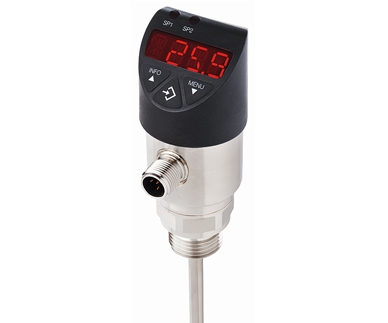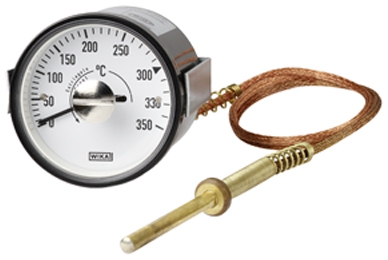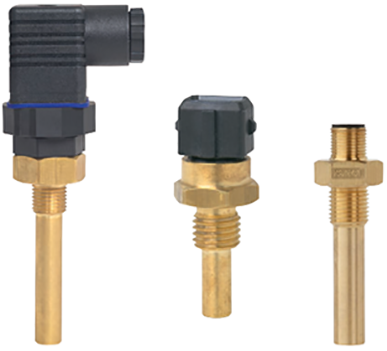
Temperature switches are used in machine building and other industrial applications for limiting temperature. They monitor the temperature and react at a predefined point. To protect from overheating they either switch the equipment or machine off or switch on a fan for cooling. Depending on the task at hand, temperature switches operate as either normally-closed or normally-open switches. Three switch types are considered for industrial applications:
Electronic switches

Example: Electrical WIKA temperature switch TSD-30
Where a higher accuracy is requested, the operator should resort to an electronic switch. With this instrument, you can change the limit values yourself and set several switch points. Electronic temperature switches can be used beyond their actual function – an additional analogue output (e.g. 4 … 20 mA) enables further processing of the signal and thus continuous temperature monitoring as well.
Furthermore, switches of this type can be fitted with digital communication (IO-Link). The advantages of these are an even faster parametrisation along with extended diagnostics functions and integration into automated processes. Via an LED display, an on-site indication can also be provided.
The wide usability of the electronics is reflected in the purchase costs. It also sets limits on the operating temperature. Its maximum value is, on average,150 °C, which is sufficient for the majority of applications, however. In order to fulfil their tasks, electronic temperature switches need, in addition to a power source, an additional contactor since their transistor only switches very low power.
Dial thermometers with switch contact

Example: WIKA expansion thermometer with switch contact SB15
The outstanding feature of dial thermometers with switch contacts is the wide temperature range. In general, expansion thermometers are used for industrial applications. They cover – depending on the version – temperatures up to 400°C.
This instrument type also offers the operator the possibility of selecting multiple switch points and setting them independently. It is also suitable for switching in the low-voltage range (250 VAC). An additional contactor is not needed. Dial thermometers with switch contacts function without additional power supply and, furthermore, offer an on-site display. A further processing of the signal is not possible, however.
In terms of price and performance, the switch solution described here is positioned in the mid range.
Bimetal temperature switch

Example: WIKA bimetal temperature switch model TFS35
Bimetal temperature switches are very compact, cost-effective and have been designed for a wide range of applications. These instruments can also switch with low voltages up to 250 VAC, and with this they can manage with no additional contactor.
Bimetal temperature switches operate with lower accuracy. Working exclusively as switches, they neither offer a local display, nor do they enable any processing of the signal. Their compact design also only permits a limited temperature range (max. 200 °C), since the plug connection is very close to the hot area.
Note
Further information on the TSD-30 electronic switch, on the SB15 dial thermometer with switch contact and on the TFS35 bimetal temperature switch can be found on the WIKA website.
Also read our articles
Overview: How does the IO-Link work?
Safety temperature limiter for plants safe to operate

